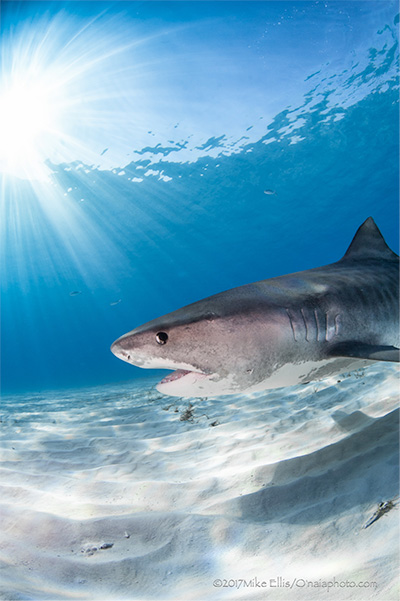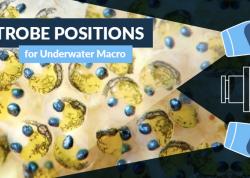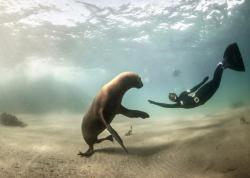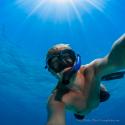Shooting Tips: Sharks and Sunbursts
A few years back I worked as boat crew during a shoot for the Animal Planet network. Their main goal was to shoot nighttime shark sequences. In keeping with my regular hours, my goal was to be up at sunrise. I carried through with my various boat duties and also made sure fresh bait was in the water to help keep the sharks around. Early to rise also meant I was the only one up and therefore had the ocean all to myself. The conditions could not have been better…a gentle east breeze, sunshine with the occasional passing cloud, clear blue water and yes, sharks.
Not long after sliding into the water, I noticed what I will say was a very lazy swagger to the sharks posture and demeanor. It appeared this was going to be a very uneventful dive. Especially since most of the larger sharks had left the shallow waters for the cooler waters found in the deep. This left me with a bunch of Lemons… sharks that is. I got my Nikon all warmed up with some of my normal type shots. But then as I was standing in 18 feet of water just taking in my surroundings with sharks swimming over my head, I spread my strobes as far as they would go and just started composing and capturing that slow swagger in the rays of the sun. I enjoy the results of that combination so much, it easily became something I strived to do with every dive.
Shooting Tips
Dealing with a big bright ball
I have yet to see a digital camera work as good as a film with the same settings with the sun, so I try my best to block out the center mass of the sun with the subject or an object. I found that the camera and I could work with the sunrays a lot better using this technique.

Flash sync speed
My first DSLR was a Nikon D70s. It was a great camera with a flash sync speed of 1/500 sec. Now it seems like the fastest sync speed you can get is 1/250 sec. But If you shoot in Manual without iTTL you can cheat by using a small piece of tape over the hot shoe pins that control sync. Just leave the main pin untaped and try turning up your shutter speed till you start seeing a black line on the bottom of your photos, then back off untill it’s gone. I was able to get my D90 to go to 1/250 (normally the max is 1/200). That might not seem like a lot, but when shooting in the clear shallow waters with midday sun every little bit helps.

Calm is cool, but rougher water at golden hour is magic
If you can see the light rays you can grab them. On the way back to the swim step I looked west and saw lots of shark action that I did not see from below. Shooting horizontal in that special hour just under the surface, I waited and watched till the sharks and the golden sunrays came together for this shot. I had turned down my strobes to ¼ power so as not to drown out any of the magic.

A large part of the best sunburst / light ray photos I have captured have been in the winter or spring as the air column has less water in it. But there are always exceptions to the rule. Any day that has low humidity and wind under 15 knots can produce great underwater sunburst photos. With wind above 15 knots, I find the salt in the air just makes for a blinding whiteout underwater.
As always with underwater photography, get close, trust your histogram over your display, compose so the majority of the sun is not in the frame and above all have fun trying and learning new techniques.


RECOMMENDED ARTICLES
SUPPORT THE UNDERWATER PHOTOGRAPHY GUIDE:
The Best Service & Prices on u/w Photo Gear
 Visit Bluewater Photo & Video for all your underwater photography and video gear. Click, or call the team at (310) 633-5052 for expert advice!
Visit Bluewater Photo & Video for all your underwater photography and video gear. Click, or call the team at (310) 633-5052 for expert advice!
The Best Pricing, Service & Expert Advice to Book your Dive Trips
 Bluewater Travel is your full-service scuba travel agency. Let our expert advisers plan and book your next dive vacation. Run by divers, for divers.
Bluewater Travel is your full-service scuba travel agency. Let our expert advisers plan and book your next dive vacation. Run by divers, for divers.































